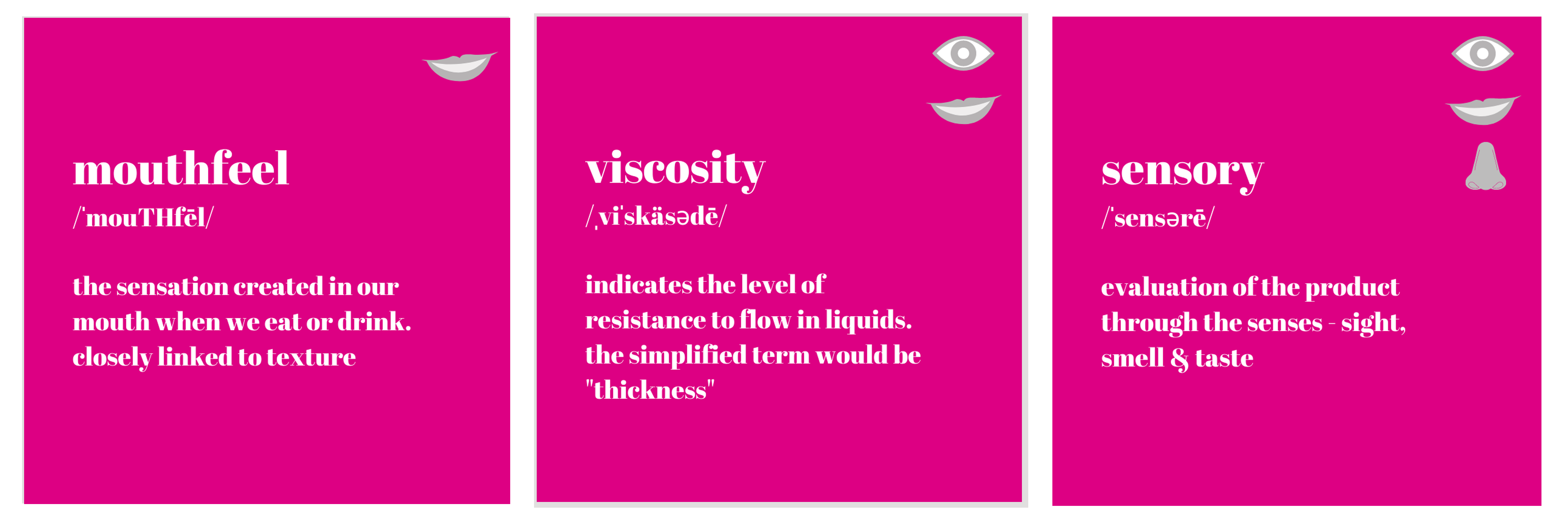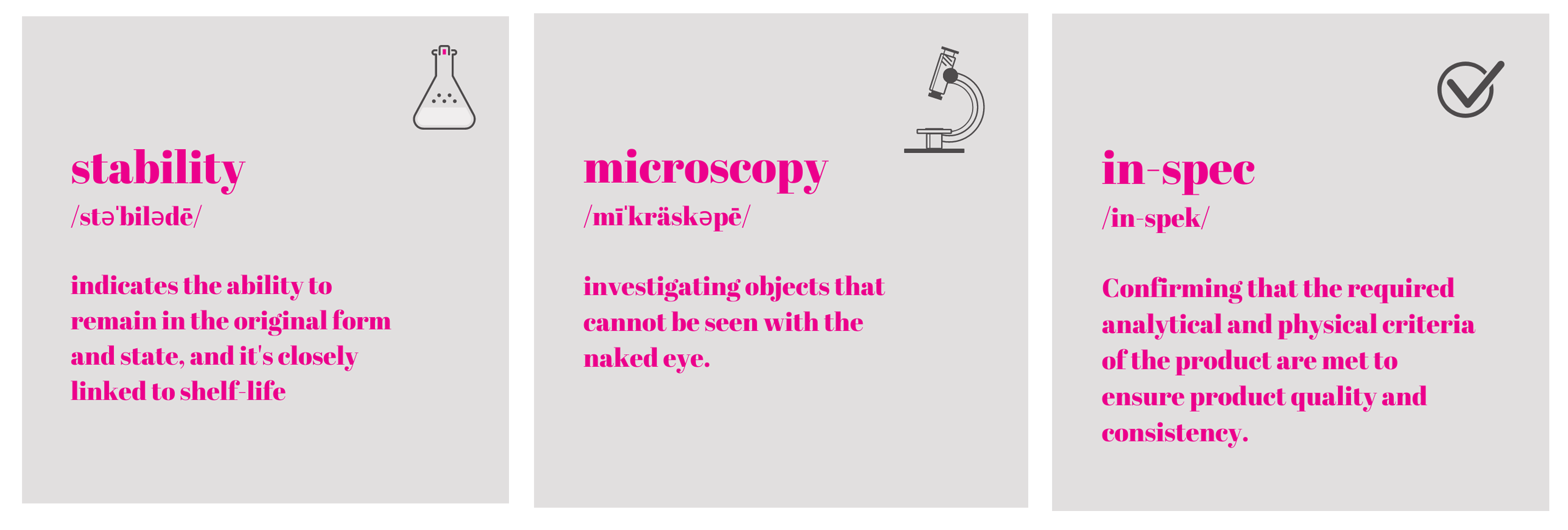Creamypedia
A glossary of cream liqueur science and spirits terminology
Whether you’re new to the spirits segment or to the cream liqueur space, this list of terms will help you learn and understand the basics of the industry.
Sometimes you want to describe a flavour or texture, but just can’t find the right words. We know the feeling! Which is why we’ve put together a list of the most-used words you’ll hear from our R&D, Innovation, and Sales Teams to describe an alcoholic beverage.
Let’s start with some basics.
Liquor: Any type of spirit or distilled beverage.
Liqueur: In general, a distilled beverage that is sweetened and is flavoured with other ingredients, such as coffee, nuts, fruits, etc.
Cream Liqueur: In general, a liqueur that contains (dairy) cream. Standard of identity varies per region.
Crème Liqueur: A liqueur that contains higher sugar content and has a thicker texture than a regular liqueur. It contains no cream.
Emulsion: the combining of two liquids that naturally do not mix. In the case of a cream liqueur that is the cream and the alcohol. Another example of an emulsified liquid is a salad dressing containing oil & water/vinegar.
Alcohol-By-Volume (ABV): Indicates the percentage of alcohol in a beverage. The number is based on volume rather than weight. For example, 40% abv would mean 40ml of alcohol/100ml of final beverage.
Proof: Similar to ABV, proof measures the alcoholic strength of a beverage. Most countries now use the term ABV, but it’s easy to calculate alcohol proof: it’s twice the percentage of ABV. For example 40% ABV is 80 proof.
pH: Measures how acidic a solution, or in our case beverage, is. The range starts from 0 and goes up to 14, with 7 being neutral. In simple terms, the lower the indication, the more acidic (sour, tangy) the liquid.
Our team can create a neutral or low pH cream liqueur, based on our customer’s needs.
Mixable: In general, when acidic (low pH) ingredients are mixed with cream, such as coffee, juice or carbonated beverages, the mixed beverage will end up curdling. We have created a line of low pH Mixable creams that allow the seamless blending of any ingredient of your choice, regardless of how acidic that might be.
For more information on cream liqueurs, check out our blog post 10 things you need to know about cream liqueurs.
Terms and definitions we use to describe the liquid
Mouthfeel: the sensation created in our mouth when we eat or drink. This term is closely linked to texture. Example: difference between a chunky soup and a pureéd soup.
Viscosity: Indicates the level of resistance to flow in liquids. The simplified term would be “thickness.” Comes from the Latin word viscum which means sticky. Example: maple syrup has higher viscosity than water.
Sensory: Evaluation of the product through the senses; sight, smell, taste. This is also referred to as organoleptic evaluation.
We always evaluate the organoleptic properties of the liquid to ensure the experience meets the customers’ desires and expectations.

Terms and definitions we use to describe the product quality:
Microscopy: investigating objects that cannot be seen with the naked eye. At Creamy Creation, we evaluate our products under a microscope as part of our quality assurance program. We want to be sure the product is homogeneous with no obvious large particles or abnormalities.
Stability: indicates the ability to remain in the original form and state, and it’s closely linked to shelf-life. In other words, the product hasn’t separated (layers) or formed “chunks” (agglomeration).
This is what we closely monitor at Creamy Creation.
In-spec: Confirming that the required analytical and physical criteria of the product are met to ensure product quality and consistency.


